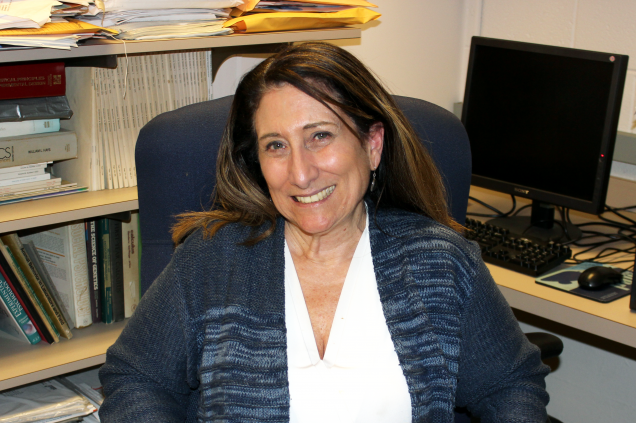FACULTY FEATURE: Kathleen Kantak

While walking through the Laboratory of Behavioral Neuroscience, one cannot help but stare at the equipment and visualize the many restless nights dedicated to countless experiments. Maybe it’s the abundance of hanging lab coats or the many apparatuses waiting to be used, but the lab brims with an addictive dose of excitement and ambition. This energy sources from the persistent and determined Dr. Kathleen Kantak, the fearless leader of this captivating space.
Dr. Kantak’s countless publications and long line of accolades provokes intimidation. However, the hesitation to make her acquaintance dissipates as her whimsical personality surfaces. Her office — a small space reminiscent of a snug personal library — is thought provoking and engaging. She unveils her story naturally, and the space seems warmer.
For Dr. Kantak, it started with a cranial fish dissection during her freshman year of high school.
“I was so enthralled by what I was seeing that I didn’t even notice I had also cut myself,” she said.
The experience of seeing a brain for the first time inspired her to pursue neural studies, and though she never imagined going into medicine or conducting clinical trials, she wanted to make a worthy contribution to society. Thus, after earning a degree from Potsdam State University, Dr. Kantak completed a Ph.D. in Biopsychology at Syracuse University, where she focused on neural control in consummatory behavior through animal models. Her post-doctoral studies — at The University of Wisconsin (Madison) and Tufts University, respectively — focused on studying aggression from the behavioral physiologist and pharmacological perspectives.
Dr. Kantak began working as an Assistant Professor at Boston University in 1982, the same year that she founded the Laboratory for Behavioral Neuroscience. Building a lab from scratch was no easy feat: grants were limited to very few researchers and the Neuroscience program was yet to be created.
“There was no neuroscience when I started… the entire department has grown tremendously over time, it has been fascinating to watch” she said.
Her work, however, proved relevant to the times. During the late 1980s, cocaine abuse emerged as a serious concern to the medical and public health worlds. This inspired Dr. Kantak to investigate the various aspects of this particular drug addiction.
Since there is no substantial treatment or FDA approved drug for cocaine dependence, Dr. Kantak’s efforts have been relentless. She has investigated both the pharmacokinetic and pharmacodynamic ways that cocaine works in the body, as well as potential drugs for therapeutic use of addiction.
Although the majority of the research she has conducted involves cocaine, Dr. Kantak has also pursued studies on animal models of ADHD. Unsurprisingly, she ended up connecting the ADHD research to cocaine as a way to study comorbidity.
“I guess I just have a high affinity for cocaine research,” she said with a smile and a laugh.
Additionally, Dr. Kantak investigates polysubstance abuse, analyzing the relationship between heroin and cocaine addictions. In her lab, she has enlisted the help of other renowned researchers originating from an array of specialties such as molecular biology, neurochemistry, and clinical research. Although her work is based on animal models of addiction, she works closely with clinical researchers and physicians to move her work one step closer to human subjects.
Today, the tenured Dr. Kantak is not only the director of the Laboratory for Behavioral Neuroscience, but she also holds an appointment as a Lecturer at Harvard Medical School in the Department of Psychiatry (Psychobiology) as well as at the Division of Behavioral Biology at the New England Primate Research Center.
At BU, Dr. Kantak currently teaches NE/PS333: Drugs and Behavior, one of the elective courses for undergraduate neuroscience majors. Her course focuses on understanding the action of drugs on the brain in order to understand how these drugs influence behavior.
Writer: Heidi Santa Cruz
Editor: Emme Enojado and Stephanie Gonzalez